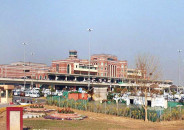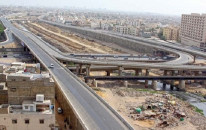Women empowerment for securing sustainable alternative livelihoods
Disaster affected populations have identified livelihoods as their greatest recovery priority

By teaching women new sustainable skills with which they can support their families, we would be giving a whole community an opportunity to break away convention and branch out. PHOTOS: COURTESY FARHAN ANWAR
The concept of alternative livelihoods, when taken within the context of coastal communities, applies when coastal natural resources come under increasing pressure and current use patterns are no longer sustainable. Alternative livelihoods therefore can be considered to exist outside the traditional or established activities for coastal communities.
Gender inequality and the country’s lack of progress
Climate change, among other things, is affecting the resources and has added many social and environmental burdens on already stressed communities. With increased frequency of extreme weather events, livelihoods of coastal communities are now at a much greater risk. The Karachi coast is dotted with coastal communities that are at high levels of vulnerability when it comes to both their exposure and capacity constraints in meeting with the consequences of coastal hazards. Their livelihoods, based almost solely on fishing-related activities, are already paying diminishing dividends and exposure to a sudden and extreme weather event is likely to make things much worse.

When it comes to assessing livelihood vulnerabilities, the poor are the most dependent on natural resources and, therefore, the most severely affected when their access to natural resources is limited or denied. It is not just their economic activities that are tied to this access; their capacity to engage in economic activities can be affected by resource degradation. Disaster affected populations have identified livelihoods as their greatest recovery priority. New, more comprehensive assessment tools have been developed to better understand livelihood needs and guide disaster livelihoods work.
More power to the women and less to the dupatta
In this case, the vulnerability data on communities at risk is missing. There is an urgent need to collate secondary data on the environment, socio-economics and household studies, while at the same time initiating a drive to collect primary data. Whenever mechanisms have to be developed for facilitating sustainable alternative livelihoods, stakeholders need to be adequately identified and roles sanctioned, while at the same time identifying external influences that affect communities.
When it comes to identifying stakeholders, a neglected area for consideration is women empowerment. It is now established that women play a significant role in the socio-economic well-being of their families and communities. In this case, however, women face numerous challenges because of their restricted mobility due to patriarchal and feudal social set ups. There is a need to enhance the productive capacity of local women within our coastal communities, in skills such as traditional craft making, baking, better stewardship and preservation of natural resources, without challenging their cultural values.
Kareena to produce documentary on women empowerment
This can be done by providing them technical and vocational training and, at the same time, instituting a system in which their products are marketed. Such measures would not only create a buffer to sustain the economic shock of a disaster but also supplement family incomes.
Women in fishing communities are already mobilised in assisting in the activities related with the fishing trade. However, the fishing sector as a whole is faced with an ongoing crisis and the contribution of the womenfolk does not deliver the dividends that are worth the time and effort put in, while compromising on health. Such diversification can potentially improve family incomes, lead to better health and education for the entire family and serve as a sustainable financial coping mechanism when faced with a natural calamity.
The writer is an urban planner and runs a non-profit organisation based in Karachi focusing on urban sustainability issues fanwar@sustainableinitiatives.org.pk
Published in The Express Tribune, November 2nd, 2015.



















COMMENTS
Comments are moderated and generally will be posted if they are on-topic and not abusive.
For more information, please see our Comments FAQ